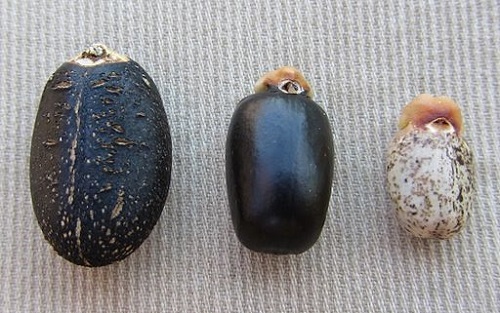Difference Between Seeds and Pollen
Seeds vs Pollen
A seed can be considered as the plant itself which is covered by a seed coat, more often than not with some food stored inside. It is the end product of the action of angiosperm and gymnosperm plants after fertilization has occurred. Seeds are considered as one of the primary modes of reproduction for seed plants Hence, they are at the end of the reproduction cycle of seed plants that first started with flowering, then pollination and so on so forth until the seeds are made.
With regard to its structure, a seed usually has three main parts namely: the embryo, a nutrient supply for the embryo and the seed coat. The embryo is the point where the new plant can grow when put in the most ideal propagating conditions. It can have one seed leaf (as in the case of monocotyledons) or two in dicots. The second part of a seed is called the nutrient supply for the embryo which in most cases is called the endosperm. This is actually a tissue -like structure that contains the nutrients that make it possible for the embryo to thrive. Lastly, the seed coat, otherwise known as the testa, can either be thick (as in coconuts) or thin (as in peanuts). It is a very important part that prevents untoward mechanical injury to the embryo, as well as, preventing it from drying out unnecessarily.
Most seeds are sold commercially with their shells or outer covering still intact. These are especially true for sunflower seeds and a majority of nuts wherein their shells must first be split open to be able to reach the seed. These two seeds can also be classified as dry fruits.
Pollens are very different from seeds because they are fine and powdery. They contain the microgametophytes or the gametes (comparable to the sperm cells) of seed plants. Like ordinary seeds, pollens can also have a hard coating for the pollen grain to provide protection during movement (pollination). Because of this nature, pollens more specifically pollen grains require some magnification for one to see. Thus, pollens are generally smaller in size compared to most seeds although there are some seeds like the orchid seeds that are considered to be dust-like in size.
Summary
1. Seeds do not contain the gametes for reproduction unlike pollens.
2. Seeds are generally bigger in size than pollens.
3. Seeds are the end products of the reproduction cycle of most seed plants while pollens are part of the starting phase of the plant reproduction process.
- Difference Between Plant Protein and Animal Protein - March 7, 2024
- Difference Between Crohn’s and Colitis - March 7, 2024
- Difference Between Expression and Equation - March 7, 2024

